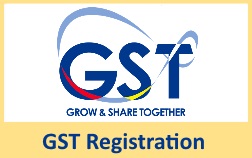Streamlining Your Singapore GST Registration: A Detailed Approach
Streamlining Your Singapore GST Registration: A Detailed Approach
Blog Article
Mastering GST Enrollment: Essential Actions to Make Certain Governing Conformity and Company Growth
Navigating the world of Product and Provider Tax Obligation (GST) registration can be a critical action for services aiming to preserve compliance and foster growth. The complex procedure of registering for GST demands a keen understanding of the vital steps entailed, from grasping the essential concepts of GST to thoroughly preparing the needed paperwork. However, past just checking off the regulative checkboxes, grasping GST enrollment opens up a realm of possibilities for services to strategically take advantage of this tax structure to drive their development. Comprehending the nuances of GST enrollment is not simply a bureaucratic requirement however a strategic action that can form the trajectory of a business in the direction of lasting success.
Understanding GST Essentials
Understanding the basics of Item and Provider Tax Obligation (GST) is important for companies to browse the complexities of tax conformity and monetary monitoring properly. GST is a value-added tax obligation levied on the supply of products and solutions in India, aiming to produce a unified tax obligation system throughout the country. Singapore GST Registration. Under GST, businesses need to register and acquire a distinct GSTIN (Goods and Provider Tax Obligation Identification Number) to be certified with the law

Readying Necessary Documents
To guarantee compliance with GST registration demands, services have to gather and arrange the required documents for the application procedure efficiently. The essential files typically needed for GST enrollment consist of evidence of service registration or unification, PAN card of the identity, business and address proofs of marketers, photos, bank statements, and proof of address of the business. Additionally, services might need to provide details of accredited notaries, business activities, and turn over. It is critical to make certain that all documents are exact, approximately day, and fulfill the requirements specified by the tax obligation authorities to prevent hold-ups or rejections in the enrollment process.
Organizing these records in an organized fashion can simplify the application process and demonstrate business's dedication to regulative compliance. Businesses need to keep both digital and physical copies of these documents for simple accessibility and referral. By preparing the required files vigilantly, businesses can quicken their GST registration process and concentrate on their core procedures with the assurance of regulative conformity.
Online Registration Refine
Begin the GST enrollment process by navigating to the main online portal designated for organization enrollment. When the account is established up, you can continue with loading out the GST enrollment application type by going into the needed service info, including business turnover, address, and kind information.

Compliance and Coverage Obligations
Upon successful registration on the GSTN portal and conclusion of the necessary documentation, businesses must follow strict compliance and reporting obligations to ensure regulatory adherence and operational transparency. Conformity needs under GST required exact and timely declaring of numerous returns, such as GSTR-1 for external supplies, GSTR-3B for anchor month-to-month summary returns, and yearly returns like GSTR-9. In addition, organizations need to resolve their sales and purchase data through GSTR-2A and GSTR-2B to claim input tax credit scores properly.
Preserving correct records of invoices, accounting documents, and other appropriate information is critical for GST compliance. Routine audits and analyses by tax obligation authorities require organizations to have meticulous documents and reporting systems in place. Any disparities or non-compliance can lead to penalties, penalties, or perhaps suspension of GST enrollment.
To simplify conformity procedures, businesses can utilize GST conformity software application that try these out automates return settlement, filing, and conformity tracking. When needed can better enhance conformity initiatives and guarantee smooth procedures within the GST framework., remaining updated with regulatory modifications and seeking expert guidance.
Leveraging GST for Organization Growth
One crucial advantage of GST is the input tax credit system, which enables businesses to declare credit histories for taxes paid on inputs. Additionally, GST promotes transparency and liability in the tax system, which can assist organizations build trust fund with companions and customers.
Additionally, GST registration can additionally open up new markets for businesses. In significance, leveraging GST for company development includes tactical preparation, effective conformity, and a progressive strategy to financial monitoring.
Conclusion
Finally, grasping GST enrollment is crucial for making certain regulatory conformity and helping with organization growth. By recognizing the essentials of GST, preparing required documents, completing the online enrollment process, and meeting conformity and reporting commitments, organizations can take advantage of GST to their advantage. It is important for organizations to follow the laws and utilize GST as a device for broadening their procedures and staying affordable on the market.
Navigating the world of Product and Services Tax Obligation (GST) registration can be a crucial action for companies aiming to keep conformity and foster Recommended Site development. The essential records commonly required for GST registration include evidence of organization enrollment or consolidation, PAN card of the address, service and identity proofs of promoters, pictures, financial institution statements, and evidence of address of the area of company.Start the GST registration process by navigating to the official online portal marked for service registration. When the account is established up, you can proceed with filling up out the GST enrollment application form by getting in the necessary business information, consisting of company type, address, and turnover details.
By comprehending the basics of GST, preparing required files, finishing the on-line enrollment procedure, and satisfying compliance and reporting obligations, organizations can leverage GST to their advantage.
Report this page